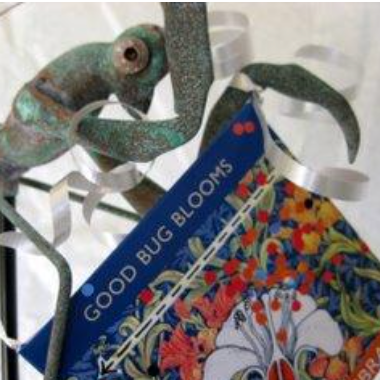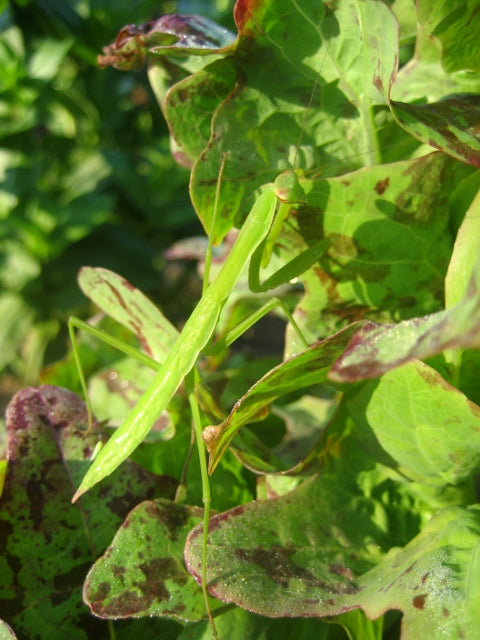
Companionship in the Garden
Plants are social, just like us. Gardens are full of relationships, partnerships, and occasional conflicts. Some vegetables, herbs, and flowers make great domestic partners, bringing balance to each other’s lives, bringing out one another’s best qualities, protecting each other from harm, and celebrating the differences. The most such famous companions are squash, beans, and corn – the three sisters. Take a look here to see them growing in Erin's garden at the Seed Library. Planted together, corn provides a space for the beans to climb up; beans enrich the soil with nitrogen, which the other plants love; and squash, creeping along the ground, covers up bare soil, thus keeping in moisture, preventing weeds, and deterring some pest with its prickly vines.
Beyond this powerful trio, there are many more opportunities to play matchmaker in the garden. Here are seven couples that illustrate different qualities, which make for strong, supportive plant relationships:
- Sage deters rust flies from attacking carrots.
- Chervil and radishes planted together produce spicier radishes.
- Lettuce loves the respite from harsh sunlight that the shade of peas can provide.
- Marigolds can control nematodes in the roots of melons.
- Borage enhances the flavor of strawberries and strengthens the berry’s disease and pest immunity.
- Nasturtiums, vining through cucumber or squash beds repel cucumber beetles and provide a habitat for good bugs like spiders (who prey on undesirable bugs).
- Radishes make excellent trap crops for cucumber beetles among squash and cucumbers (although the radishes themselves don’t fair well in this scenario).
 Few species have just one soul mate. Most pair well with a few others, while some love all garden residents unconditionally. French Marigolds, for example, planted near any plant, confuse an array of pests with their strong smell, making it tough for a bug to find its lunch. Hugging the garden with thyme, lavender, or other pungent herbs can deter (some) slugs, rabbits, and woodchucks. A few flowers take a different approach and attract insect allies like ladybugs or lacewings: predatory bugs that eat other, unwelcome, bugs. We’ve grouped these wise flowers in our Good Bug Blooms mix.
Few species have just one soul mate. Most pair well with a few others, while some love all garden residents unconditionally. French Marigolds, for example, planted near any plant, confuse an array of pests with their strong smell, making it tough for a bug to find its lunch. Hugging the garden with thyme, lavender, or other pungent herbs can deter (some) slugs, rabbits, and woodchucks. A few flowers take a different approach and attract insect allies like ladybugs or lacewings: predatory bugs that eat other, unwelcome, bugs. We’ve grouped these wise flowers in our Good Bug Blooms mix.
For a fuller list of companion plants, take a look at these helpful PDFs from Cornell University:
Companion Planting for Vegetables (also, Pests and Plants that Repel Them)







